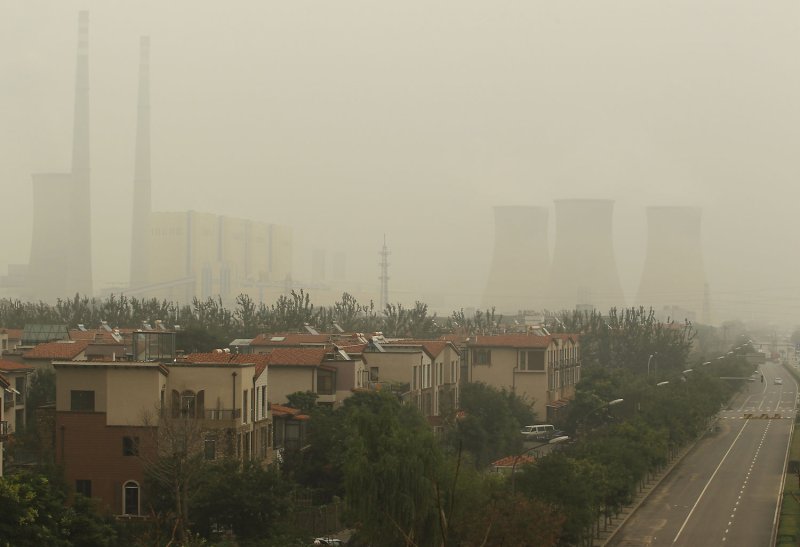An upscale housing area is shrouded by heavy pollution next to a power plant in Beijing on July 11, 2012. In 2012 China's capital has seen some of the worst air pollution since the government promised more "blue sky" days after the 2008 Olympics. UPI/Stephen Shaver |
License Photo
BEIJING, Dec. 6 (UPI) -- China has announced a new air pollution reduction plan.
The plan, unveiled Wednesday at the U.N. climate talks in Doha, addresses PM2.5 -- fine particulate matter 2.5 microns or less in diameter -- and calls for cutting the PM2.5 intensity at least 5 percent by 2015 in 13 major areas covering 117 cities, state-run news agency Xinhua reports.
"The starting point of the plan is to improve air quality and resolve the PM2.5 problem, an issue directly related to and most concerned by people," Zhao Hualin, head of the Ministry of Environmental Protection's Department of Pollution Prevention and Control, told Xinhua.
China, the world's biggest emitter of carbon dioxide, measures air quality based on PM 10, which doesn't detect smaller particulate pollutants that pose health risks.
In smog-veiled Beijing, for example, residents typically rely on the U.S. Embassy for air quality readings of PM2.5, which are posted on Twitter nearly on the hour.
To meet the new air pollution targets, China will limit coal-fired power and further promote the use of clean energy as well as further limit the number of industrial programs with high-energy consumption and pollution.
Other measures include prohibiting high-emission vehicles from the Beijing-Tianjin-Hebei, Yangtze River Delta and Pearl River Delta regions.
China also said it would reduce the intensity of PM10 by 10 percent and sulfur dioxide and nitrogen dioxide by 10 percent and 7 percent, respectively.
A 2008 study by the World Health Organization estimated that outdoor air pollution was responsible for 1.3 million premature deaths worldwide per year, 800,000 of them in Asia.
And this year, a report by the Organization for Economic Cooperation and Development projected that the number of premature deaths from exposure to particulate matter is projected to reach 3.6 million a year globally by 2050, with most of the deaths occurring in China and India.
Separately at Doha, Wang Shu, an official from China's National Development and Reform Commission, said China was considering a nationwide emissions trading scheme in its next five-year plan that begins in 2016.
That program would expand upon pilot emissions trading programs launched in Beijing, Tianjin, Shanghai, Chongqing and Shenzhen and the provinces of Guangdong and Hubei.
The Chinese Academy for Environmental Planning, an arm of the Ministry of Environmental Protection, earlier this year said that China's carbon dioxide emissions had more than doubled from 3.5 billion tons in 2000 to 7.2 billion tons in 2009. By that time, China had overtaken the United States as the world's largest emitter of greenhouse gases.















